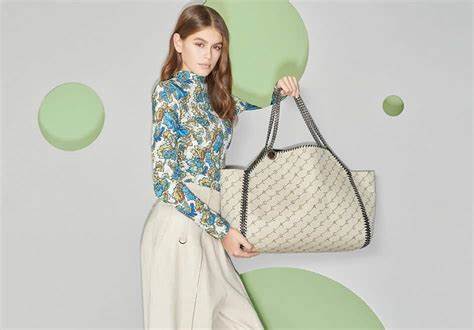Luxury fashion has long been associated with exclusivity, craftsmanship, and timeless elegance. However, in recent years, the industry has undergone a transformation—one that prioritizes not just style and quality, but also sustainability and ethics. Today, more than ever, consumers are demanding that their clothing reflect both their personal values and a commitment to a better world.
1. What is Sustainable Luxury?
Sustainable luxury combines high-end fashion with eco-conscious practices, ensuring that style doesn’t come at the expense of the planet. It focuses on ethical sourcing, responsible production, and long-lasting quality—rejecting the wastefulness of fast fashion in favor of pieces that are designed to endure.
Luxury brands that embrace sustainability use organic fabrics, recycled materials, and ethical labor practices to create fashion that is not only beautiful but also responsible.
2. The Shift Towards Ethical Fashion
Gone are the days when luxury fashion was solely about extravagance. Today, brands are redefining what it means to be luxurious by focusing on transparency, fair wages, and sustainable supply chains.
Consumers are increasingly aware of where and how their clothing is made. They seek brands that:
✔ Use eco-friendly fabrics like organic cotton, TENCEL™, and recycled wool
✔ Reduce waste and pollution by adopting zero-waste production techniques
✔ Ensure fair working conditions for artisans and factory workers
✔ Minimize carbon footprints by using local sourcing and ethical production
3. Quality Over Quantity: The End of Fast Fashion
Fast fashion promotes excessive consumption, mass production, and low-quality materials that wear out quickly, leading to more waste in landfills. Sustainable luxury, on the other hand, is about investing in fewer, better-quality pieces that last for years rather than just a few months.
A timeless blazer, a handcrafted leather handbag, or a high-quality silk dress—these are not just fashion statements; they are investments in durability, craftsmanship, and sustainability.
4. The Role of Innovation in Sustainable Luxury
Luxury brands are embracing cutting-edge innovations to minimize their environmental impact. Some of the most exciting advancements include:
🌿 Bio-based fabrics – Materials made from plants, such as lab-grown leather and mushroom-based textiles
🔄 Circular fashion – Upcycling and recycling old garments into new luxury designs
💧 Water-saving technologies – Eco-friendly dyeing and finishing processes that use less water and chemicals
🌱 Carbon-neutral production – Brands committing to net-zero emissions through sustainable sourcing and green energy
5. Why Consumers are Choosing Sustainable Luxury
Today’s shoppers are more conscious than ever about the impact of their fashion choices. They want clothing that aligns with their values, and they are willing to invest in pieces that are responsibly made.
By choosing sustainable luxury, consumers:
✨ Support ethical labor and fair wages
✨ Reduce waste and pollution in the fashion industry
✨ Enjoy high-quality, long-lasting garments that never go out of style
✨ Make a positive impact on the environment and future generations
6. HHLabel: Embracing the Future of Sustainable Fashion
At HHLabel, we believe in fashion that is as responsible as it is elegant. Our commitment to sustainability and quality ensures that every piece in our collection is crafted with care, consciousness, and timeless sophistication.
By investing in sustainable luxury, you’re not just making a fashion statement—you’re making a difference.
Final Thoughts
Sustainable luxury is more than just a trend; it’s the future of fashion. As consumers demand greater ethics, transparency, and responsibility, luxury brands must rise to the challenge—proving that style and sustainability can go hand in hand.
Are you ready to embrace fashion with a purpose? Explore HHLabel’s latest collection and step into a future where luxury meets sustainability.


